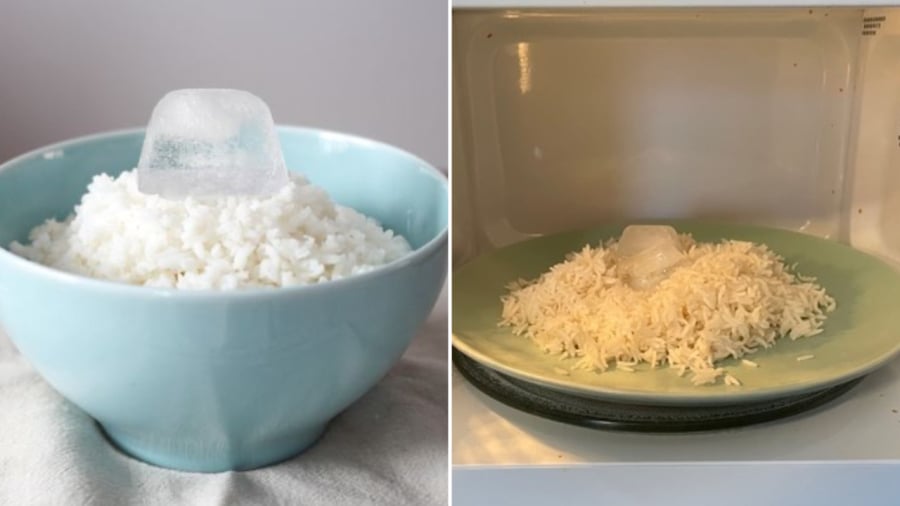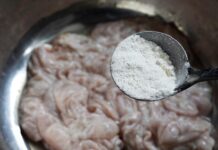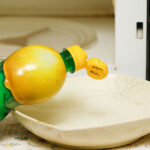Tip for Reheating Rice in the Microwave
It is common to store leftover rice in the fridge for another meal. Some people also prefer cooking a large batch of rice and dividing it into portions to be reheated when needed.
The quickest way to reheat rice is by using a microwave. It only takes a few minutes for the rice to become hot and fluffy, just like freshly cooked rice. However, a common issue when reheating rice in the microwave is that it can become dry, hard, and the grains separate, affecting the taste and texture.
To solve this problem, simply add a cold ice cube to the rice before placing it in the microwave. It is important to note that only heat-resistant glass, ceramic, or porcelain bowls should be used, and metal utensils should be avoided.

Adding an ice cube while reheating rice in the microwave prevents it from drying out.
Place the ice cube on top of the rice and cover the bowl with microwave-safe plastic wrap. Poke a few holes in the plastic wrap with a toothpick, or you can simply use a lid if available.
Then, put the bowl in the microwave and heat for a few minutes, depending on the amount of rice. The ice cube will melt during this process, providing moisture and preventing the rice from drying out.
Other Important Notes for Reheating Rice in the Microwave
As mentioned earlier, only use materials like glass, ceramic, or porcelain that are safe for microwave use. Never use metal utensils, enamel-coated utensils, or porcelain with metal trim as they can damage the microwave.
When using plastic wrap or plastic containers, ensure they are specifically labeled as microwave-safe by the manufacturer to guarantee safety. Using low-quality plastic can cause toxic chemicals to leach into your food, posing health risks. Additionally, the heat may cause the plastic to melt or deform.
It is also not recommended to reheat rice multiple times as it reduces the nutritional value and affects the taste and texture of the rice.
The Ultimate Guide to Sparkling Clean Microwaves: A Cost-Effective Solution
“Over time, your microwave oven can become a greasy, grimy mess with food stains and odors. But don’t despair! With these simple, easy-to-follow steps, you can quickly and effectively clean your microwave and get rid of that nasty smell. Say goodbye to the grime and hello to a sparkling, fresh-smelling appliance!”



































